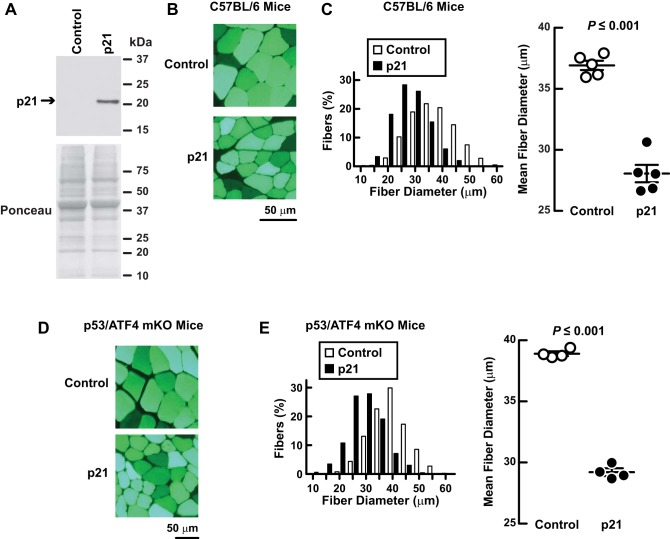Fig. 10.
p21 induces muscle fiber atrophy in a manner that does not require immobilization, p53, or ATF4. A and C: in C57BL/6 mice, 1 TA muscle was transfected with 15 μg p-p21-FLAG plus 2 μg of p-eGFP, and the the contralateral TA (control) was transfected with 15 μg of empty plasmid (pcDNA3) plus 2 μg of p-eGFP. Bilateral TAs were harvested 7 days later for further analysis. A: an equal amount of protein from each muscle (40 μg) was subjected to immunoblot analysis with anti-FLAG monoclonal IgG. Membranes were stained with Ponceau S to confirm equal loading. B and C: histological analysis. Representative images (B) and quantification of muscle fiber size (C). C, left: fiber size distributions; each distribution represents ≥2,500 fibers from 5 muscles. C, right: mean fiber diameters; each data point represents the mean diameter of ≥400 fibers from 1 muscle. Horizontal bars denote means ± SE. D and E: TA muscles of p53/ATF4-mKO mice were transfected and harvested as in A–C. D: representative images. E: quantification of muscle fiber size. E, left: fiber size distributions; each distribution represents ≥1,200 fibers from 4 muscles. E, right: mean fiber diameters; each data point represents the mean diameter of ≥250 fibers from 1 muscle. Horizontal bars denote means ± SE. C and E: P values were determined with a paired t-test.

